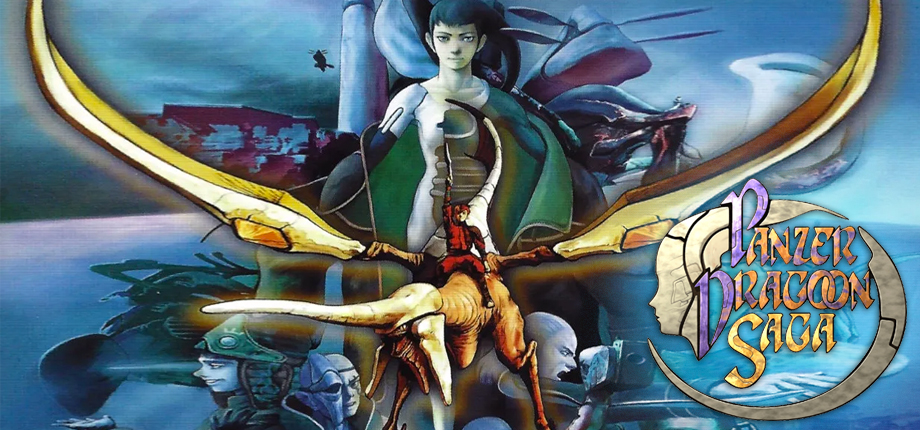
Panzer Dragoon Saga
I’m often wary of cult classics in general, but especially cult classic JRPGs. The last one of those that I played was Xenogears, which I’d seen described as a “flawed masterpiece” despite its enormous flaw-to-masterstroke ratio. Panzer Dragoon Saga is a perfect counterpoint to that game, being another extremely ambitious example of the genre with a similar reputation, also released in 1998. The difference is that Saga sticks the landing on most of its gameplay elements and is creative and interesting enough to distract from the places where it doesn’t. I’m continually astounded by how imaginative this game is. Calling it “ahead of its time” doesn’t do it justice. It could have been released today, and it would still be considered one of the most original games of the year.
Saga is not merely an entry in the Panzer Dragoon series that happens to be a turn-based RPG; it’s a full-on adaptation of its forerunners’ rail shooter gameplay into the new genre. Battles focus on positioning your dragon around adversaries to pinpoint weaknesses, minimize incoming damage, and optimize the targeting of your homing lasers (oh yeah, the dragons in this series breathe homing lasers, which I will never get tired of mentioning). The screen-clearing “berserk” attacks from Zwei that were conserved for moments of overwhelm have been expanded and now function as the equivalent of magic. Even dungeon navigation is performed on dragonback, which performs a function similar to platforming in a Mario RPG, livening up the unavoidable travel between important events with mildly engaging movement mechanics.
As surprisingly effective as the genre transition is, Saga’s best feature is entirely new. There’s a fairly in-depth system where the dragon can be morphed along two axes with mutually exclusive stats at each end. The resulting form determines which special abilities it will have when a full turn gauge is reached or expended, as well as its stat growth on level up. While the forms are technically sorted into five categories, you’re free to fine-tune them further. Most importantly, the dragon’s form (and the behaviour of its rider’s weapon) can be shifted mid-battle, creating dynamic combat encounters that are nearly void of routine.
This unrestrained creativity unfortunately leaves the gameplay rough around the edges. A promising battle feature is the ability to chain movement and combat actions by executing them during the previous animation, but there’s no indication of the timing required. This means the skill involved is reduced to button mashing, except button mashing is unreliable when half of your actions are selected from a menu. The result is an indecisive difficulty level where 50% of your opponents are more difficult than they were clearly intended to be. Additionally, the dragon’s form abilities are completely unbalanced. Lastly, while the flight-based movement mostly does its job, it falls short in the game’s second half, where all of the level design becomes labyrinthine and repetitive.
Arguably the most impressive thing Saga accomplishes is construct an engaging story out of the anemic narratives of the first two games without losing the series’ identity. An appropriate balance of coherence and ambiguity expand the incredibly alien setting while avoiding cliché as much as possible (antagonistic faction simply called The Empire notwithstanding). It’s all brought to life with possibly the best music in the series, as well as extensive pre-rendered cutscenes. The latter age very badly, possibly even more than the messy in-game graphics (the Saturn really wasn’t equipped for 3D rendering). Interestingly, the use of full voice acting gives them a partial leg up on the technically-better competition, which was limited in what events it could depict. And as any subtitled anime purist will tell you, the lack of an English dub means I have no idea if the cast is putting in a trainwreck performance or not.